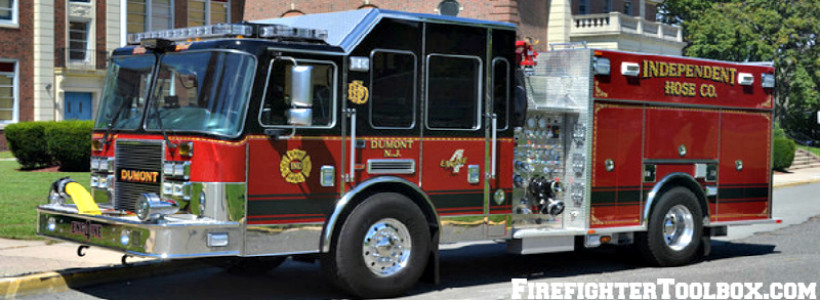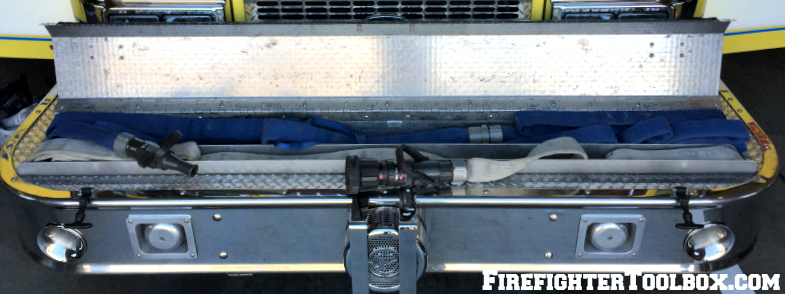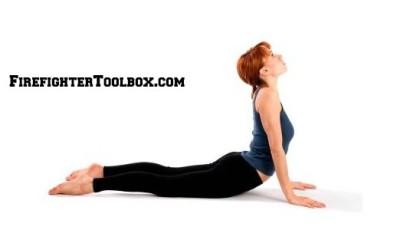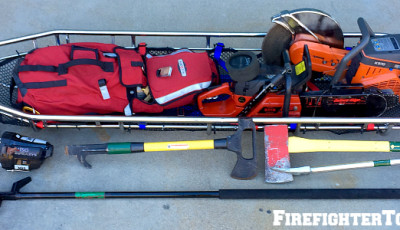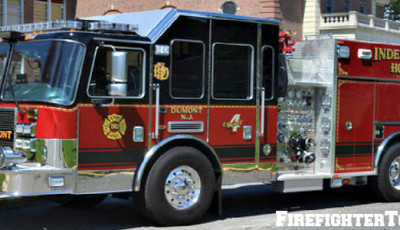The Rookie Firefighter’s Top 10 Tools – Part 1
Rookie firefighters are expected to know all of the equipment that is on their fire truck. The great rookie firefighter knows the following about their truck’s equipment: how to use it, when to use it, and where everything is located. It takes time, effort, and consistency in building this mastery. In this article, we will cover the rookie firefighter’s top 10 fire truck tools. Keep in mind that this article is written from the perspective of a fire company that is equipped to perform engine, truck, and rescue functions on the fire ground/emergency scene.
1. Fire Hose
Attack Hose: If you use preconnected attack lines, know the length, diameter, type of nozzle, and the flow range of these hose lines. For example: “In the front bumper, we have a 200′ 1-3/4″ line with a fog nozzle. It can flow 95-200 GPM. It is loaded with the triple flat load.” Do this for every attack line that your truck has, including any booster or forestry lines.
Supply Hose: Know the length(s) and diameter(s) of your supply hose. For example: “My apparatus carries 800′ of 3″ and 1000′ of 5″ supply hose. They are loaded with the flat load.”
2. Hand Tools
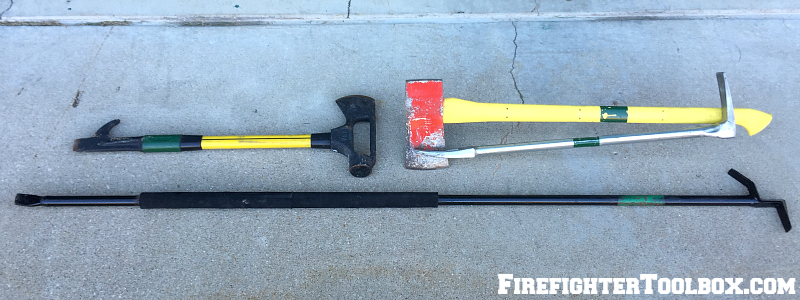 Hand tools typically include (but are not limited to) the halligan, axes, sledgehammer, T.N.T., hooks, hydrant and spanner wrenches, etc. When we check our truck’s compartments at the beginning of each shift (or training), let’s make sure to not just open the door, look at the tools, and then close it. Let’s grab the tools off of the truck, inspect them, and perform maintenance as needed (i.e.- paint/re-wrap). By having our hands on these tools, we are building muscle memory and instilling pride through proper maintenance.
Hand tools typically include (but are not limited to) the halligan, axes, sledgehammer, T.N.T., hooks, hydrant and spanner wrenches, etc. When we check our truck’s compartments at the beginning of each shift (or training), let’s make sure to not just open the door, look at the tools, and then close it. Let’s grab the tools off of the truck, inspect them, and perform maintenance as needed (i.e.- paint/re-wrap). By having our hands on these tools, we are building muscle memory and instilling pride through proper maintenance.
3. Rescue Tools
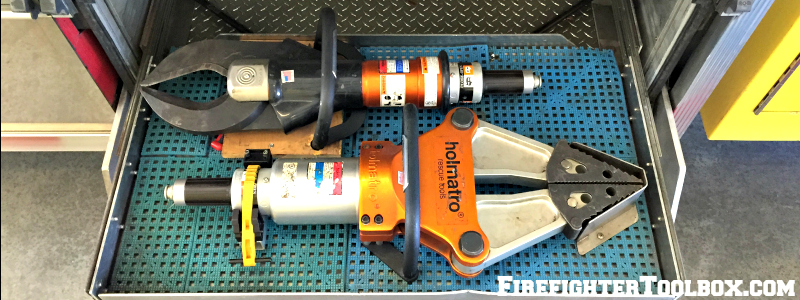 If our truck is equipped with hydraulic rescue tools (i.e.- spreaders, cutters, rams, etc.), we should know their capabilities and their limitations. Pull them off the truck and work with them regularly. Practice holding them like we will use them on the emergency scene. Find out the best ergonomic body position that will put the least amount of stress and fatigue on your muscles.
If our truck is equipped with hydraulic rescue tools (i.e.- spreaders, cutters, rams, etc.), we should know their capabilities and their limitations. Pull them off the truck and work with them regularly. Practice holding them like we will use them on the emergency scene. Find out the best ergonomic body position that will put the least amount of stress and fatigue on your muscles.
4. Ground Ladders
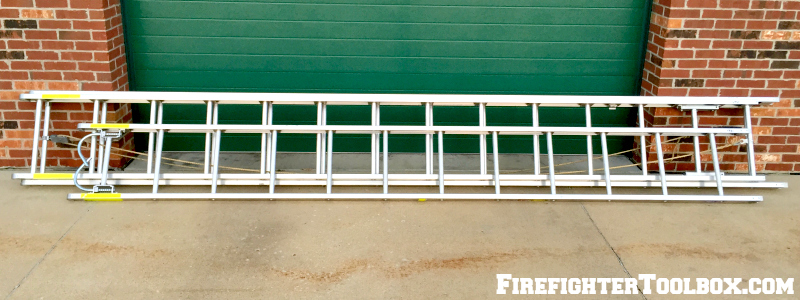 Be able to name all the types and sizes of ground ladders that are on your truck. For example: “We have 24′ and 35′ extension ladders, 14′ roof ladder, 10′ attic ladder, and a Little Giant ladder.” If equipped with an aerial ladder, know the total length when it is fully extended. With all of our ladders, let’s operate and train with them regularly, knowing the applications and limitations of each.
Be able to name all the types and sizes of ground ladders that are on your truck. For example: “We have 24′ and 35′ extension ladders, 14′ roof ladder, 10′ attic ladder, and a Little Giant ladder.” If equipped with an aerial ladder, know the total length when it is fully extended. With all of our ladders, let’s operate and train with them regularly, knowing the applications and limitations of each.
5. Power Saws
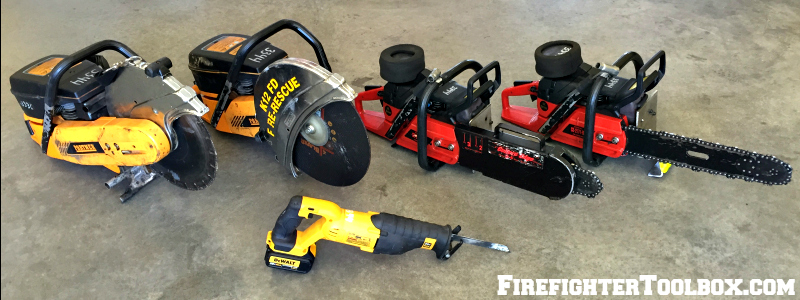 Fire trucks carry various types of saws: roof chainsaw, K-12/Partner (rotary) saw, standard chainsaw, and/or a reciprocating saw. Much like the rescue tools, we must get these saws off of the truck, inspect and operate them daily, and practice holding them in the same positions that we will use them on the fire ground. There is a big difference in holding a rotary saw (while idling) as compared to when it is at full throttle: the intense torque causes the forward movement of the saw to twist.
Fire trucks carry various types of saws: roof chainsaw, K-12/Partner (rotary) saw, standard chainsaw, and/or a reciprocating saw. Much like the rescue tools, we must get these saws off of the truck, inspect and operate them daily, and practice holding them in the same positions that we will use them on the fire ground. There is a big difference in holding a rotary saw (while idling) as compared to when it is at full throttle: the intense torque causes the forward movement of the saw to twist.
Definitely check out the 2nd part of The Rookie Firefighter’s Top 10 Tools.
You can click here to read part 2 (When released)
Header Photo: Brett Dzadik. All other photos by Jim Moss.

